If you want to see lots of range-restricted bird species in Rwanda, then Nyungwe National Park is without doubt the place to be! Nyungwe is part of the Albertine rift, a mountain range which runs through Uganda, DRC, Burundi, and Rwanda. This region is renowned for its high number of Albertine Rift Endemic (ARE) species, and Nyungwe has more ARE species than any other forest on the eastern side of the rift. The park is home to approximately 30 ARE bird species, which include Handsome Francolin, Regal Sunbird, and Red-collared Babbler. It is also home to a number of African mountain specialist species, and in good numbers too! This list includes Dusky Twinspot, Red-faced Crimsonwing, Western Green Tinkerbird, and Abyssinian Crismsonwing. Whilst these aren’t ARE species, their limited distribution across the continent means it always great to see them! Nyungwe National Park is a biodiversity hotspot teeming with life! For more information about Nyungwe’s ARE birds, I can recommend this page on my good friend and Naturalist, Gaël Ruboneka Vande weghe’s website, Gael World.
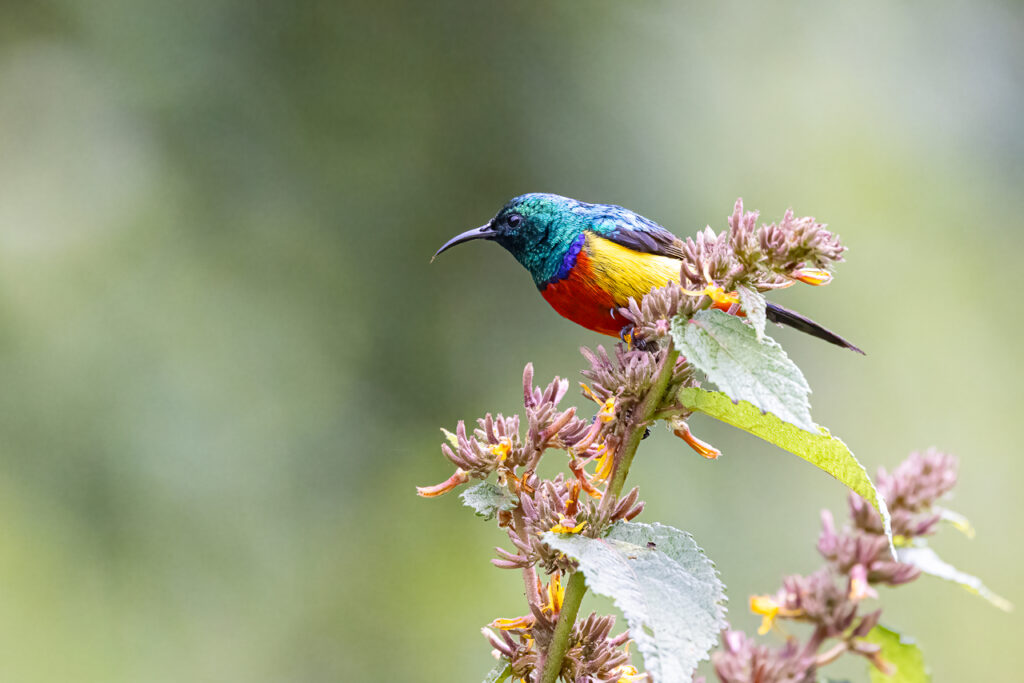
Covering approximately 1,019 km2, Nyungwe National Park is located in the south-western portion of the country. The south of the park runs over the international border with Burundi (where it is known as Kibira National Park), and Lake Kivu – Rwanda’s largest lake –lies to the west. The park has a variety of habitats to explore, including tropical forests, bamboo-covered slopes, highland wetlands, and grasslands. These habitats contain ecosystems which support both forest-dwelling and wetland bird species as well as thirteen primate species, including Chimpanzees, L’Hoest Monkey and Blue Monkey. The variation in vegetation found between Nyungwe’s highest peaks and lowest valleys also helps to explain the density and diversity of birds found within the park.
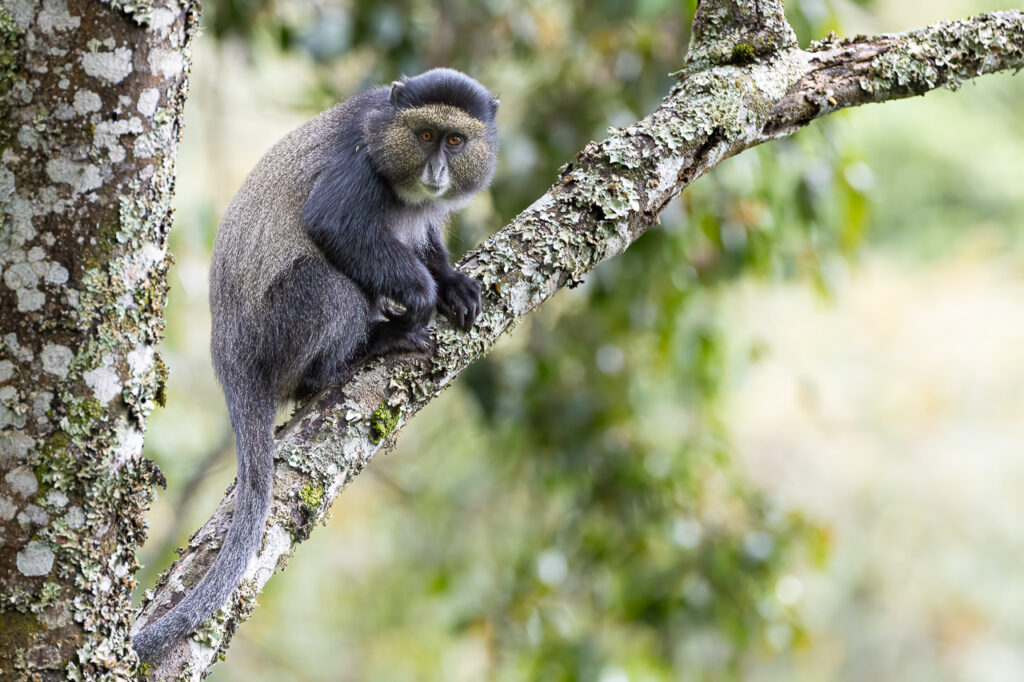
The five plus hour drive from Kigali takes you through a kaleidoscope of stunning scenery before you start gaining altitude and reach sprawling tea plantations and the village of Kitabi. This marks the eastern edge of Nyungwe National Park. One main road runs east to west through the park, bisecting the northern and southern parts. Sixteen trails lead off from the main road to access the deeper parts of the park. The main road takes you west to Uwinka, the heart of the park and one of the park’s two reception centres. Follow the road further and you’ll come to Gisakura, which sits on the western edge of the park, where there’s more tea plantations and also a second reception centre. At points while driving through the park you’ll be met with breath-taking views looking down on the misty canopy of trees and rolling hills – my young daughter calls Rwanda’s cloud forest the ‘broccoli forest’! At other points when the elevation drops, it’s like you are entering another world, surrounded by huge trees, dense vegetation and the hum of forest life.
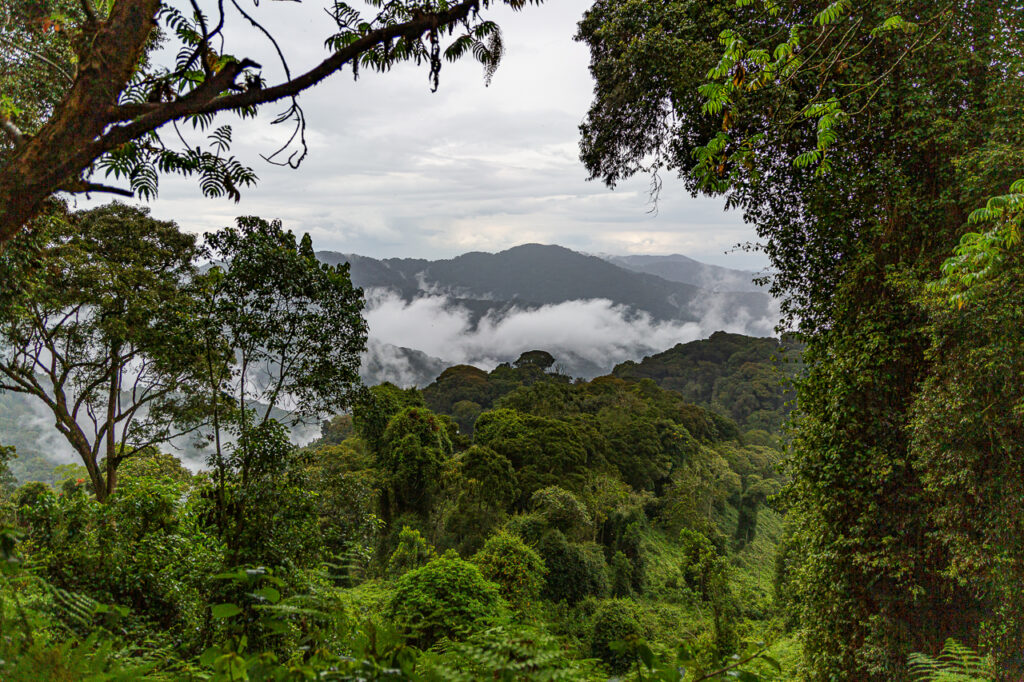
Over 350 bird species have been recorded in Nyungwe National Park, including the 30 ARE species mentioned above. The entire National Park is great for birding, and whilst spotting birds in dense vegetation and thick tree canopies can be somewhat tricky, the park has some extremely knowledgeable bird guides. Some of the expert guides have lived and worked in Nyungwe for decades and are able to identify the birds from their vocalisations alone, which is critical when trying to find some of the more elusive species! For example, you’re walking along a trial with your guide and they hear a call and point to the vegetation off to your right which lightly shakes and rustles, something is definitely moving underneath… Your guide explains they heard a Banded Prinia, which are particularly shy and prefer to stay out of sight and low to the ground, foraging amongst the forest understorey. You are watching the small shakes of vegetation when your guide then hears a second call, slightly in front of the vegetation you’re still watching. Two birds are now calling from beneath the vegetation, first one and then the second responds with the same series of almost metallic ‘plink’ notes. You both watch as the rustling vegetation you first spotted slowly moves towards the second call your guide heard. After watching the movement of the vegetation for what seems like an age, a small dark brown bird with white bands across its chest hops up to an exposed stem just above the vegetation, quickly looks around and then hops back down into the undergrowth and is gone again. Without your guide’s knowledge of Banded Prinia calls and foraging behaviour you would have had zero chance of seeing one for the first time! The park’s sixteen trails cover 130 kilometers across Nyungwe, so fortunately the guides know the best ones to take to look for specific species. They are also able to bring the park to life with their knowledge and experience of starlings that nest behind the park’s waterfalls to large hornbills which seal themselves inside tree cavities to incubate their eggs.
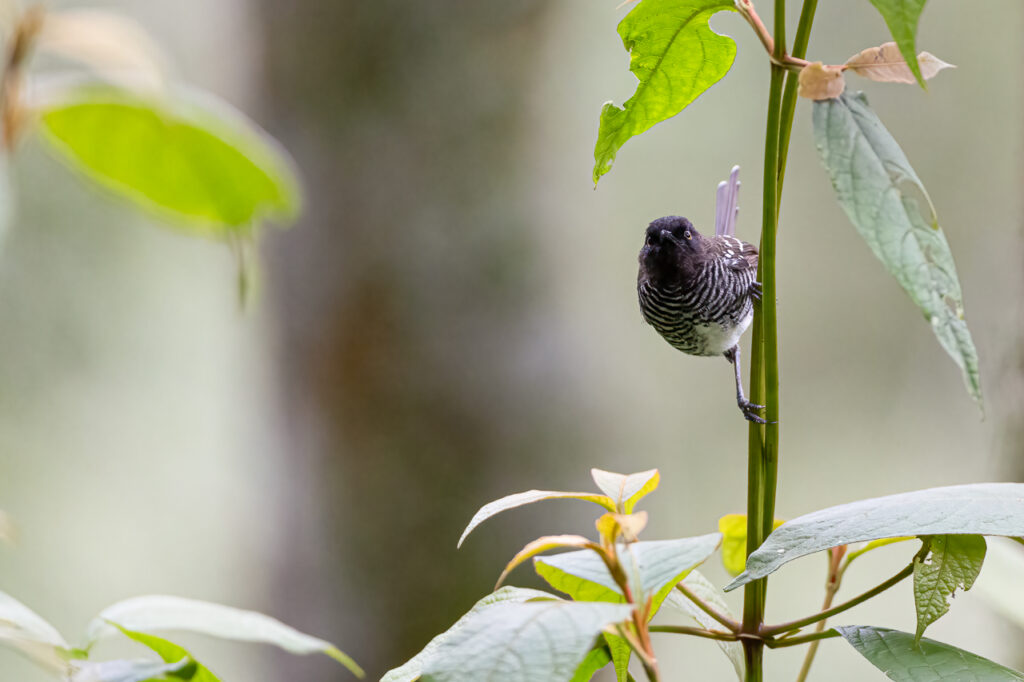
Just outside the park there’s a whole range of accommodation options to choose from, ranging from five-star hotel chains through to eco-lodges and camping! However, to give yourself the best chance of seeing Nyungwe’s birds up close, staying inside the park at Uwinka is highly recommended! Waking up to a dawn chorus is a great start to any day, but to then see a Great Blue Turaco or White-headed Woodhoopoe in the trees around you and Yellow-bellied Waxbills foraging on the ground makes it magical! Uwinka and its surrounding area is also home to ARE species like Regal Sunbirds, so keep your eyes peeled!
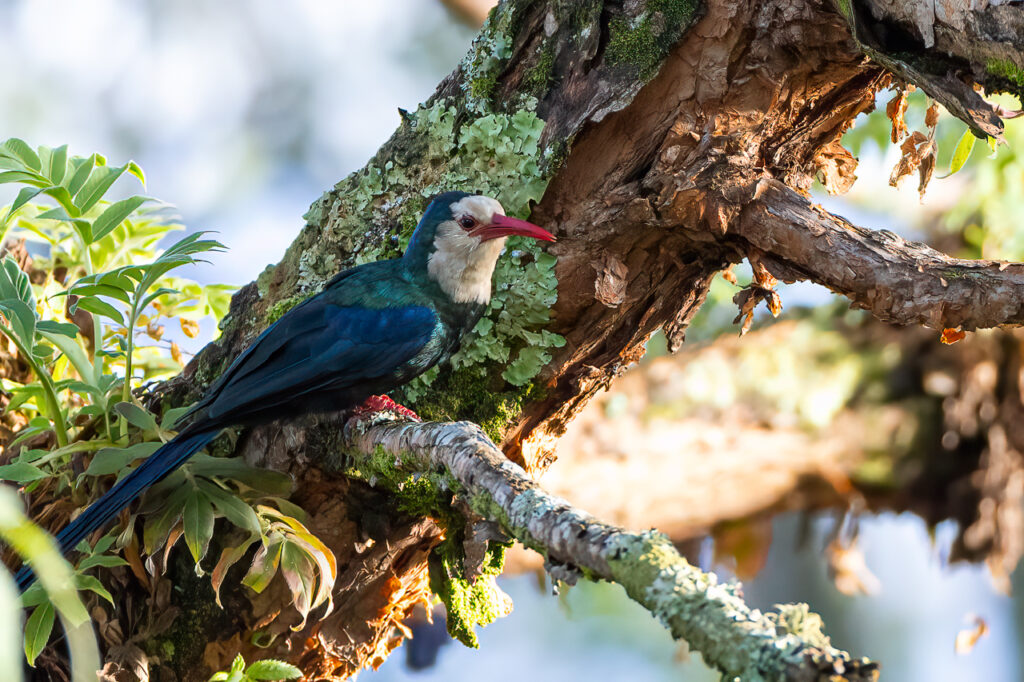
Nyungwe National Park has so much to offer, and not just in terms of biodiversity. The park is also home to East Africa’s only canopy walkway, and you can do primate trekking, night-walks, multi-day treks through the forest, and the annual marathon race. With all of these alongside the new activities and experiences being developed, you’ll keep coming back to Rwanda’s ‘broccoli forest’ for more!
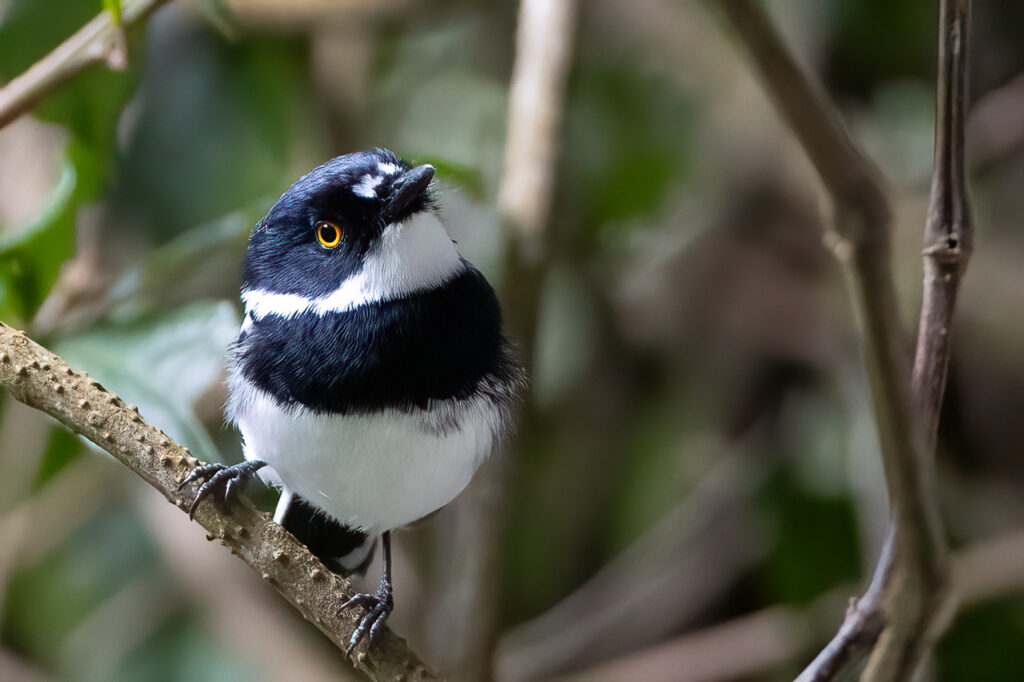

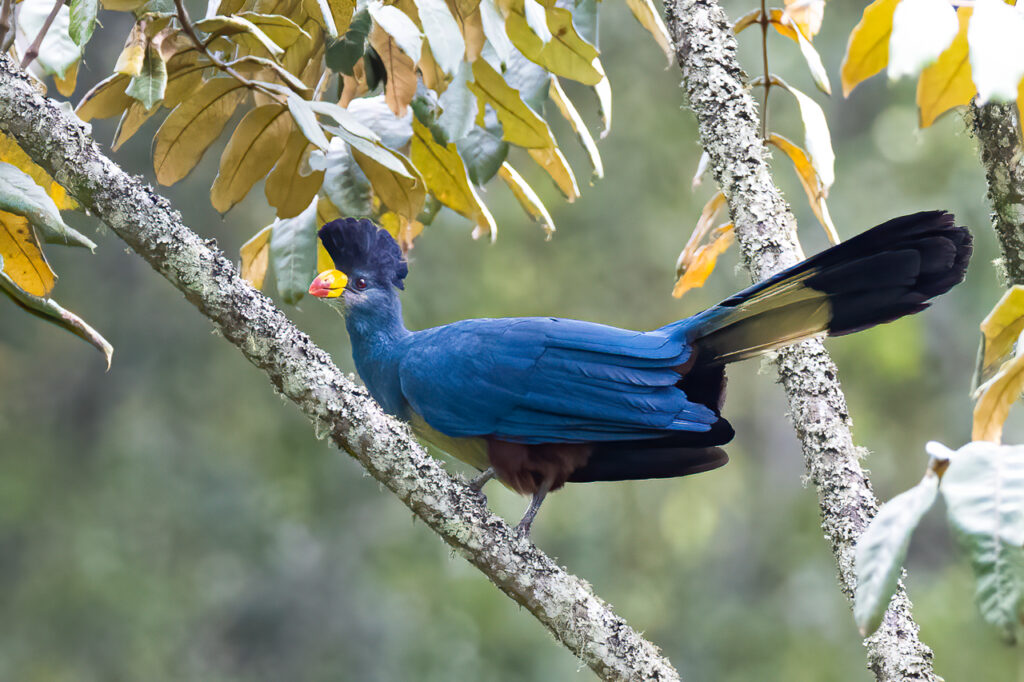
Beautiful trip through the “broccoli forest” with you. Great photos which I’m sure took a lot of patience to take. Thank you for sharing all of the beautiful birds and scenery.
Thank you for your kind words Christine, they’re really appreciated.
Great information Will, love the blue monkey and the woodhoopoe, very informative x
Thank you Tracey, glad you enjoyed it! x
Fantastic post! It makes me want to travel to Rwanda and see all these birds and animals, fauna and flora, forests as well. And of course meeting with Rwandans, to know more about their culture, their way of life.
I used to live in Congo Brazzaville, decades ago. A lot of changes i guess. I think Rwanda is quite different as well.
Thank you so much, Will, to give us the desire to visit this country!❤️❤️
Thank you for your comments Nikky, they make me happy!
Thanks for sharing this.
You’re very welcome!
A true and compelling account of the magical birding in Nyunge National Park. I can’t wait to get back there for a fifth visit, this place draws you back!
Thank you for your kind words Hilary, I share your desire to keep returning to Nyungwe, it’s a magaical place.
Great blog. We are planning on doing a trip to Nyungwe soon so will definitely look out for a Handsome Francolin
Thanks David, enjoy Nyungwe and let me know if you find the francolin!